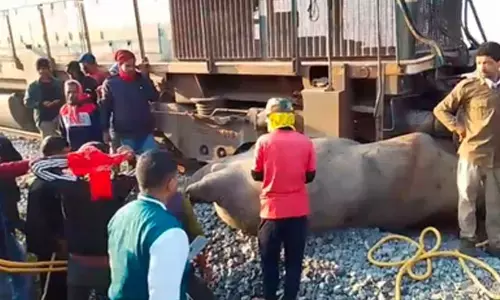Refugia in Bag

Over the years, Bt Cotton\'s resistance to pink boll worm (PBW) has reduced and during the last season alone the pest has caused 20-25 per cent loss to the crop across the states. This year, the loss could go up, which could lead to a major agrarian crisis, experts say.
With the dreaded pink boll worm attack looming over the current seasons Bt Cotton crop across 11 states, an aggressive communication campaign #SecureFarmer2SecureIndia has been launched with the involvement of a number of stake holders, including public and private sector establishments.
Over the years, Bt Cotton's resistance to pink boll worm (PBW) has reduced and during the last season alone the pest has caused 20-25 per cent loss to the crop across the states. This year, the loss could go up, which could lead to a major agrarian crisis, experts say.
To overcome this problem, the union government has recommended a unique RIB (Refugia In Bag) concept, wherein 25 grams of non-Bt Cotton seed is mixed with 450 grams of Bt Cotton seeds. 'Refuge' plots are non-transgenic plants.
The strategy of growing 'refuge' plants around the GM plants is to prevent or delay the development of Bt-resistant insects. This enables planting non-BT cotton which can host PBW wild insects and prevent resistance build-up in PBW.
Earlier, farmers generally ignored this process and cotton crop fell victim to pink boll worm attack. During the current season, however, the National Seeds Association of India (NSAI) has taken up the issue on a war footing and revived the RIB concept. Several seed and pesticide companies have also begun to distribute pheromone traps as part of their CSR projects.
More than 100,000 traps have already been pressed into service both by public and private sector establishments for early detection of PBW attack. NSAI has also represented to the Union Agriculture Ministry to popularise the Integrated Pest Management (IPM) programme which involves crop rotation of cotton with other crops, biological control of insects with the help of insects and parasites that devour pink boll worms and destroying crop residue and trash in the field.
As per government statistics, cotton is grown on 10.5 million to 12.5 million hectares (or 25-30 million acres) across 11 major growing states of Maharashtra, Gujarat, Telangana, Andhra Pradesh, Karnataka, Punjab, Haryana, Madhya Pradesh, Rajasthan, Odisha and Tami Nadu. In peak years, the cultivated area may touch 12 mha. Boll worms are still the most dangerous pests of cotton, as they thrive on boll or fruit of cotton which contains Kapas or fibre, thereby causing severe economic damage.



















